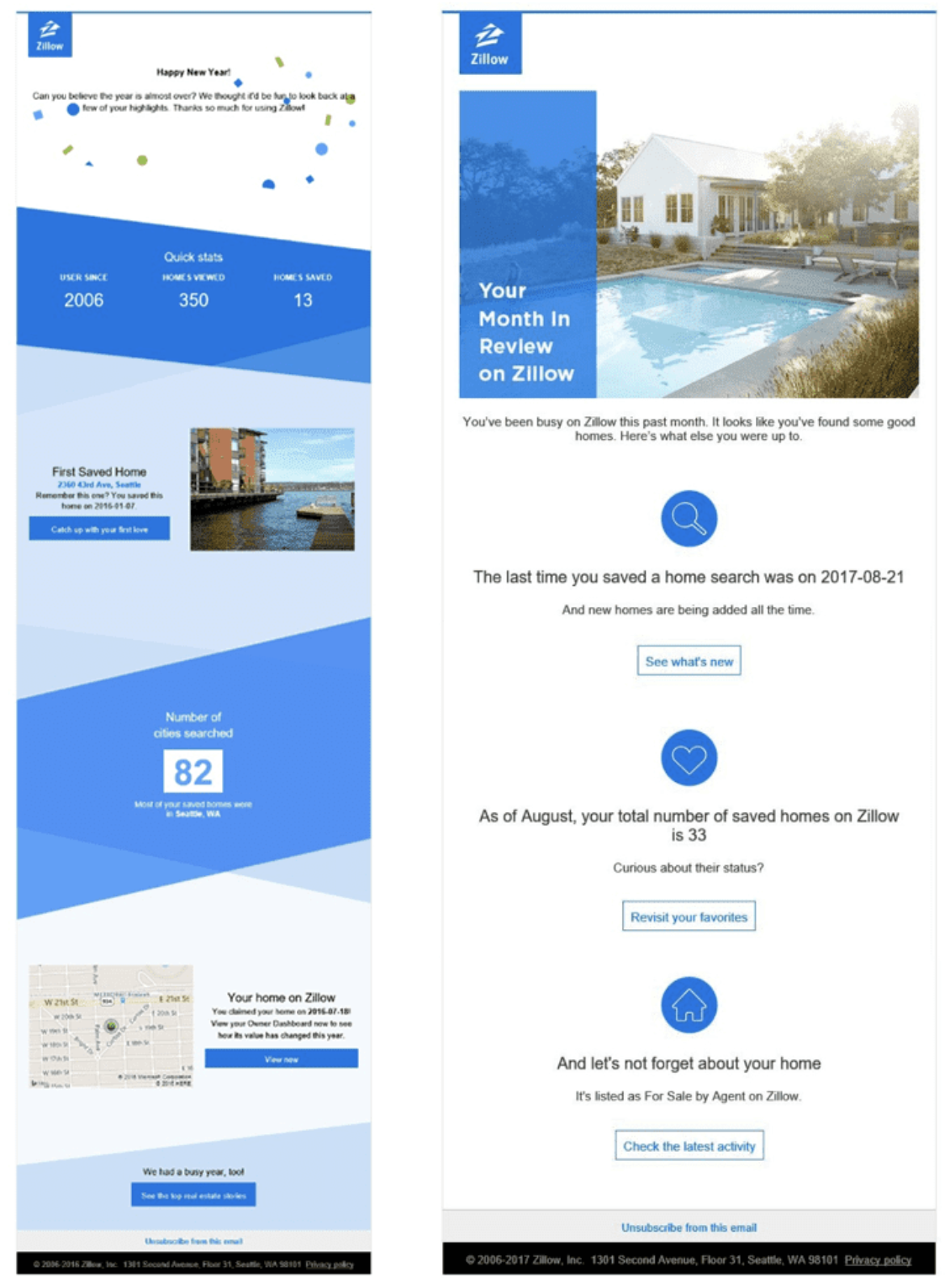Spotify needs no introduction, the world’s most popular audio streaming subscription service has been around for years now, and this past week took social media by storm. On December 1st, Spotify released their annual “Spotify Wrapped” campaign—a year in review campaign personalized to a user’s account.
Featuring everything from your top five artists to most listened to podcasts and songs, the campaign highlights a customer’s data in a fun, engaging, and, most importantly, individualized way.
The results of such a personalized campaign speak for themselves. Users flocked to social media to share their findings and Spotify has seen a 31% jump in app downloads.
Spotify is the latest company that is prospering from great data collection and leveraging that data to create individualized user experiences. Some of this personalized experience is not new for Spotify—they have been using this data, combined with AI, to create curated playlists and offer song recommendations for years. But it’s the success of their year in review campaign that has marketers taking notice.
With so much success coming from the Wrapped campaigns—over 90 million people engaged with Spotify Wrapped in 2020—Spotify has built campaigns that replicate this unique, personalized experience on a more frequent basis.
Spotify hit a sweet spot. By being transparent with data collection and using it to create an individualized campaign, Spotify got existing customers to engage with their app and new customers to download it. But, how can this success translate to other brands? What can marketing teams learn from this data collection dynamo?
5 Takeaways from Spotify Wrapped
As marketers, there’s a lot we can learn from Spotify’s campaigns, aside from our favorite music. The most important learnings are:
- Consumers crave a personalized and differentiated experience
- Sometimes the best data comes directly from the user
- Consumers are happy to share their data if they know value will come from it
- Personalization that highlights behavior builds a connection and increases engagement
- Interactivity brings consumers into their own experience, leading to extended loyalty
Personalization isn’t a nice-to-have, it’s a requirement for modern marketers to connect with users. Consumers expect an individualized experience—91% are more likely to shop with brands that provide offers or recommendations that are relevant to them. And, if you’re worried about data collection, it’s important to look at whether you’re adding value with the data you collect—90% of consumers are willing to share personal behavioral data with companies for a cheaper and easier experience.
Leveraging Zero-Party Data for Personalization
While Spotify may have the spotlight right now, all brands—no matter the industry—can benefit from leveraging data in a similar way to create personalized experiences.
Mint, a FinServ company, launched their year-in-review campaign analyzing and sharing how users managed their finances over the year. And Zillow, a real estate marketplace, has both a month- and year-in -review campaign—all enabled by smart data collection and leveraging that data in their communications.


Zillow’s month- and year-in-review messages keep users involved in their experience.
Zillow’s month and year in review messages keep users involved in their experience.
While these personalized campaigns can be some of the most engaging, they can also be some of the most challenging to create, especially without the right tech stack to support these. To get to this level of personalization, it’s important to make sure you have the technological foundation set. When assessing your martech stack’s ability to provide the visibility needed to personalize the customer experience, keep this in mind:
- Do we have a data warehouse or CDP that keeps all of our data in one centralized location?
- Is our marketing automation platform able to integrate with our data management tools to give our marketers a 360-degree view of the customer profile?
- Is our data updated in real-time to prevent any irrelevant messaging reaching our customers?
A few years ago, Zillow was using a legacy marketing automation platform so when it came to leveraging the zero-party data they collected to build out and send a year-in-review campaign, the process took an entire year of cross-functional work.
After re-evaluating their processes and tech stack, Zillow switched from their legacy provider to Iterable so they could easily leverage data and speed up the execution of campaigns without losing time using unnecessary resources.
Upon switching, they started a month-in-review campaign as they now had the bandwidth. The new campaigns took four days for one email marketer to complete and at a monthly frequency allowed for exponentially more engaging touchpoints.
With the right tech stack in place, yes, you gain visibility into a customer’s complete behavioral data profile, but you also make immense gains in ease of use for your team to perform at their highest level while building a closer connection with your customers.
Give the People What They Want
Spotify’s Wrapped has shown us how consumers crave a personalized experience, and are willing to share their data for valuable experiences—a theme becoming increasingly important as we approach a cookie-less world. While Spotify is the latest company to see dividends from their personalization efforts, all brands have the ability to benefit from creating a 1:1 relationship with customers.
Take Spotify Wrapped as an opportunity to be inspired. Analyze the zero-party data you currently collect and look for chances to get users involved in their journey with your brand. Your LTV will thank you.
For more about how to level up your personalization, check out our Personalization Playbook series highlighting the core pillars of personalization: User Segmentation, Lifecycle Mapping, Workflow Building, and Dynamic Content.
































